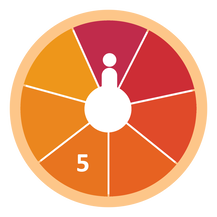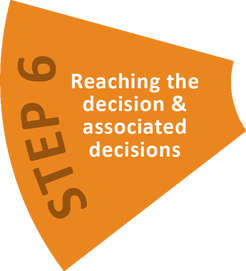By this stage in supporting the decision-making process, you will have gained the knowledge about the decision (Step 2), including how it aligns with the person’s preferences (Step 3) and any constraints surrounding it (Step 4).
In situations involving conflict there is a danger that supporters may override the person’s preferences to avoid risks. This can be the case when a person’s preferred decision could result in harm to them or others.
This video talk introduces you to Step 5.
As a supporter, you need to determine whether further discussion or more formal discussion is required for the decision. Simply saying ‘no’ to the person may mean undermining not only the person’s preferences but also their right to make decisions about their own life.
In these instances, it is important that you bring conflict to the surface and name it so that you can find ways of dealing with it. It may be necessary to seek a formal process to resolve the conflict. This may be seeking help from a supervisor, using an established process in your organisation, seeking external advice or making a request for appointment of a Guardian or Administrator.
It is important to remember that most supporters are not formally appointed as Administrators or Guardians and legally cannot override a person’s preferences. If you are concerned that a decision a person wants to make may cause harm to themselves or others, or there is conflict among supporters you must consider whether a formal process is needed.
Each state has different laws about Guardianship and Administration. A link to the laws in each from the relevant Office of the Public Advocate or Public Guardian can be found in the Module Resources section under Module 3
This video shows a situation where a formal process might be needed to manage conflict associated with the decision.
Watch the video and then answer the questions. Write in the downloadable workbook located in the Resources section.
- What type of decision has been made?
- How does Jerry’s support worker justify the decision?
- Describe the conflict that exists in this scenario.
- What might be a good way forward from here to both support Jerry’s diet and address his apparent behavioural changes?
This video shows a situation where a formal process might be needed to manage conflict associated with the decision.
Watch the video and then answer the questions. Write in the downloadable workbook located in the Resources section.
- What does Tom want to do?
- What type of decision has been made by Tom’s father?
- Describe the conflict that you see in this situation.
- Explain how Tom’s dad could have better supported his son’s decision.
Select the button below to learn about Step 6 Reaching the decision & associated decisions




